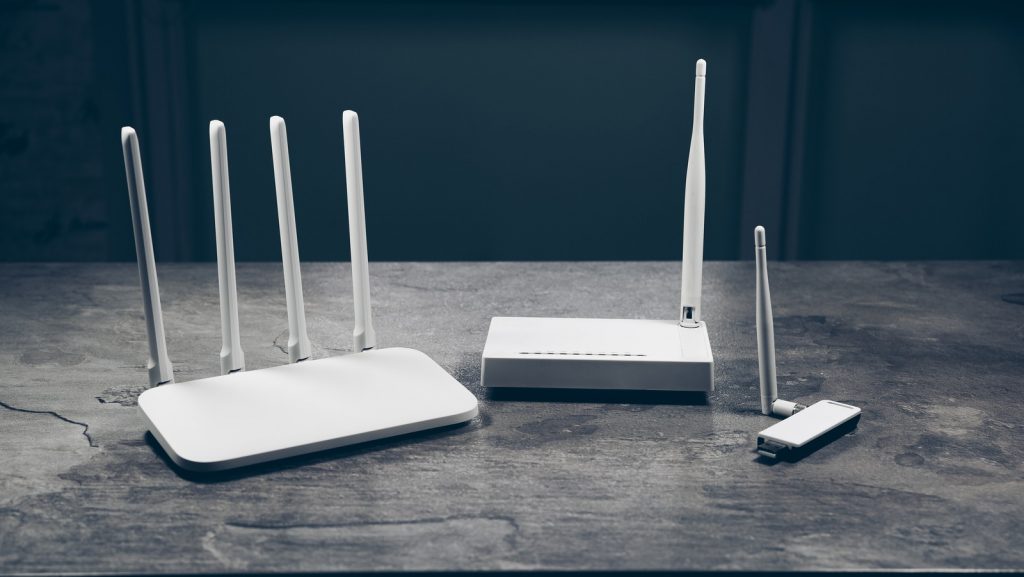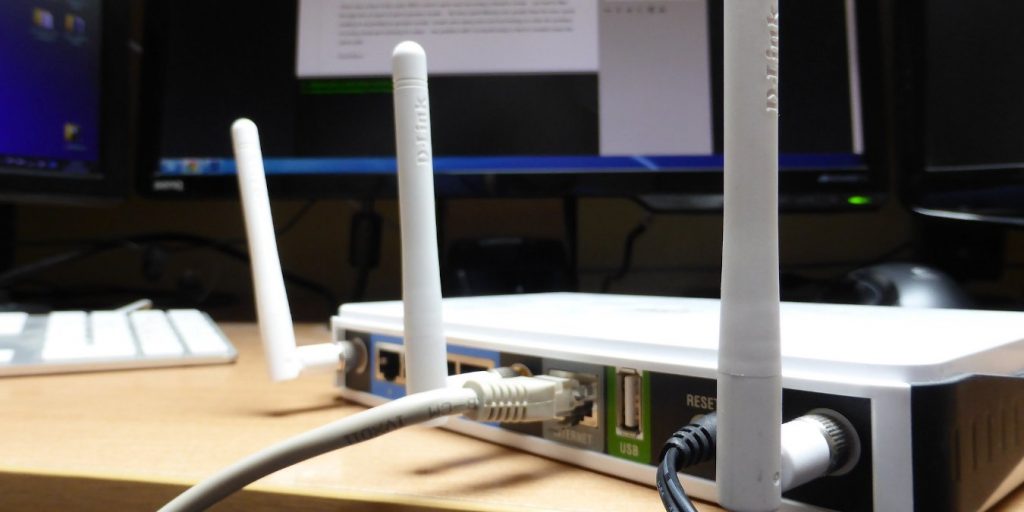Do you want to solve your router’s WiFi coverage problem? Are you considering using an old router sitting in the drawer to extend the network and wondering if that is even possible?
If that’s the case, you came across the article that will tell you all you need to know about how to use a router as an extender, and by the time you’re done reading it, you will know how to set up any router to extend a network.

How to Use a Router as an Extender
Setting up a second router to act as a network extender can be done in two ways: wirelessly or using an ethernet cable. Wireless extension offers more versatility, but the router needs to support this feature. Ethernet cable connectivity offers more stability, but you must run cables to connect both routers.
What option you choose depends on what you want to achieve.
An Ethernet cable will be better if you need a solid and stable extended network connection.
If you want more versatility when positioning the router for the best signal extension, and signal strength is not your main concern, choose the wireless extension method. Note that your router has to support the wireless extension feature for it to work.
In the following section, you will find instructions on using a router as an extender in both situations.
Ways to Use a Router as an Extender
How to use a router as an extender wirelessly
The more versatile method of using a router as an extender is to connect it wirelessly to the main router. This connection is only possible if the second router supports the “Wireless Bridging” feature. It may also be called “Wireless Repeater” mode, which is the same.
A wireless bridge between two routers is called the connection between them, in which the first or main router delivers the internet signal. In contrast, the second router receives and extends it across a broader range.
To connect two routers wirelessly, follow these instructions:
Make sure your router supports wireless bridging
Before starting the configuration process, you need to ensure that the second router is capable of wireless bridging. You can quickly check this by accessing the router’s web-based configuration utility and looking for an option called “wireless bridge” or “wireless repeater.” You can do that by typing the router’s IP address into any web browser and entering the login data.
You’re ready to start configuring if such an option is available. If not, you can still use that router as an extender but with an Ethernet cable.
Access the router’s web-based configuration utility
Most routers use an IP address such as 192.168.0.1 or 192.168.1.1 to access the configuration utility, depending on the brand and model. If you’re having trouble accessing the utility, look up your router’s model online and search for the correct IP address.
Search for the “Wireless Bridge” or “Wireless Repeater” mode
Once you’re inside the configuration utility, search for the “Wireless bridge” or “Wireless repeater” option, and enable it. Once enabled, configure it like so:
- Enter the SSID of the network you wish to extend (this is your primary network name) or click the “Survey” button if it is available.
- Enter the passkey of the network you want to connect to (your main network).
- Select the same channel as your primary network (For example, if your primary network is on channel 1, then the repeater’s network should also be on channel 1).
- Enter the same SSID name for the repeater network, or choose a new one so you can tell them apart.
- Save the changes and restart the router.

Disable DHCP on the second router
This is a crucial step! Disabling the DHCP (Dynamic Host Configuration Protocol) on the second router will make wireless bridging possible.
Simply search for a separate DHCP tab within the configuration utility, and disable the DHCP option altogether. This action will probably make the router restart to save the new settings, which is fine.
DHCP automatically assigns IP addresses to devices connected to the same network, so it cannot allow two routers to assign IP addresses. This is why this option is turned off for the second router.
Change the Default Gateway IP address of the second router
One last thing to configure is to change the default gateway IP address of the second router to another value different from the one on the primary router.
For example, if your primary router has a default gateway IP address of 192.168.1.1, then you can change the IP address of the second router to anywhere between 192.168.1.2 and 192.168.1.254.
Changing the Default IP address will allow you to enter the configuration utilities of both routers without any conflicts if they are both on the same IP address.
How to use a router as an extender with an Ethernet cable
If your router doesn’t support wireless bridging, or you simply want to extend your network using a more stable connection, then using an ethernet cable is the only way to do it. The ethernet cable transfers the internet signal from the main router to the second router, which then uses a new network to extend the range of the main one.
To configure the second router as a wired network extender, follow these steps:
Access the router’s web-based configuration utility
You can access the second router’s configuration utility by entering its default gateway IP address into any web browser. The router can be connected to the PC using an Ethernet cable or wirelessly.
Configure the wireless settings (optional)
Once you access the configuration utility, locate the “Wireless” tab and configure its parameters. If you’ve already configured them, then skip this step.
Setting the wireless settings is the same as with any router, and you can choose to use the same SSID and passkey as the primary network or assign new ones to tell the networks apart.
Disable DHCP
Disabling DHCP is paramount for this to work! Locate the DHCP settings in the configuration utility of the second router, and disable it, after which the router will restart to adjust to the changes.
Connect the two routers
The last step is connecting the two routers using the Ethernet cable.
Insert one end of the cable into one of the LAN ports of the main router and the other end of the cable into one of the LAN ports of the second router to establish an extended network connection.
The WAN port on the primary router is where the internet signal comes from, while the WAN port on the second router is not used in this case.
Read more: How to Configure Router to Use WPA3
Conclusion
Now that we’ve provided you with a detailed guide on how to use a router as an extender wirelessly or using an ethernet cable, you should have no problem extending your network’s range wherever you need.
Remember to always plan ahead, and consider what works best for you, and you can choose the extension method according to your needs.